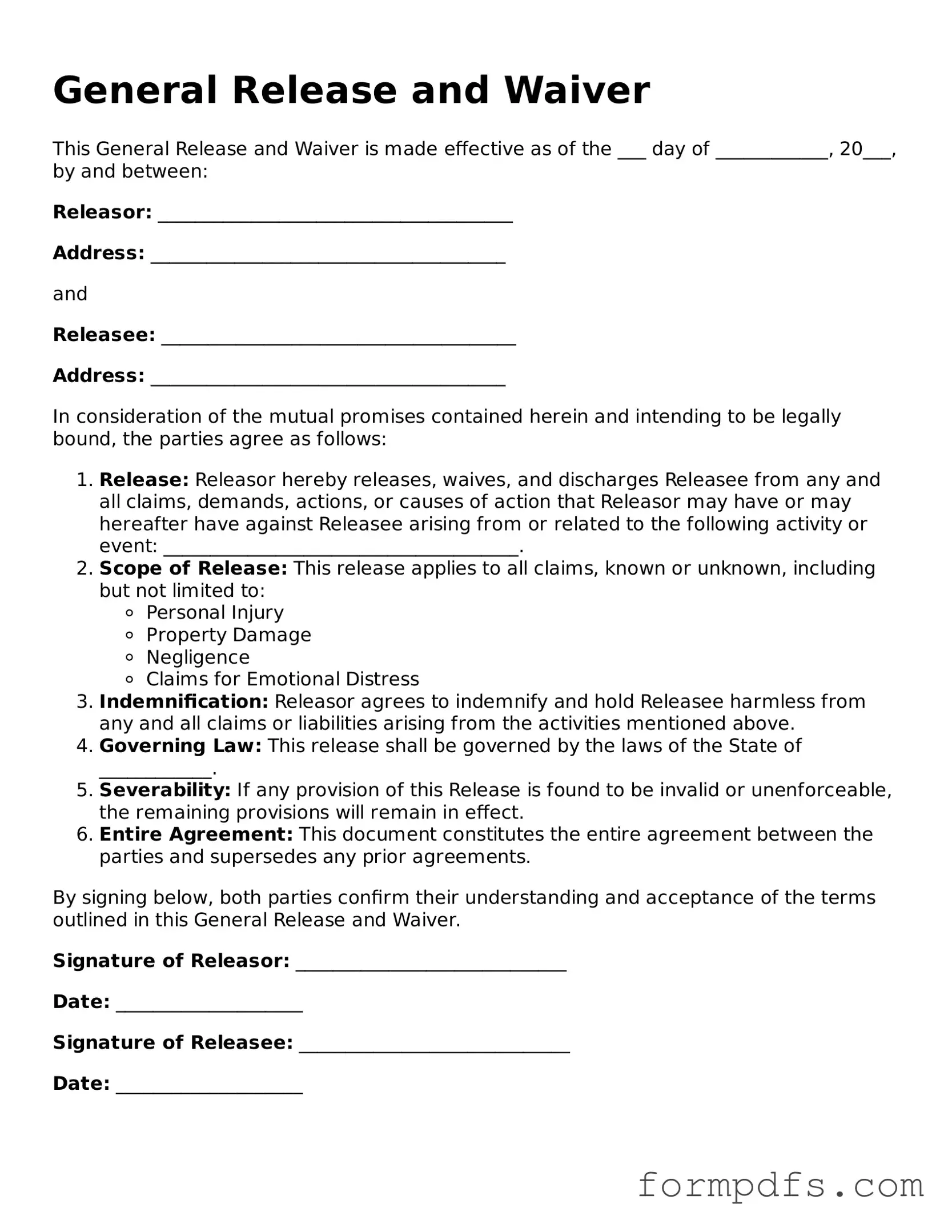What is a General Release and Waiver form?
A General Release and Waiver form is a legal document in which one party relinquishes their right to pursue any future claims against another party. This form is often used in various contexts, such as settlements, agreements, or participation in activities where risks are involved. By signing this document, individuals acknowledge the risks and agree not to hold the other party liable for any injuries or damages that may occur.
Why would someone need to sign a General Release and Waiver form?
Individuals may be required to sign this form to protect the organization or individual offering an activity, service, or event from potential legal claims. For example, participants in sports events, recreational activities, or workshops often sign these forms to acknowledge the inherent risks and waive their right to sue for injuries that may arise during participation.
What are the key components of a General Release and Waiver form?
A typical General Release and Waiver form includes several essential components. These often consist of a clear statement of intent to release the other party from liability, a description of the activities or circumstances covered by the waiver, and a section where the individual acknowledges understanding the risks involved. Additionally, there is usually a space for signatures and dates to validate the agreement.
Is a General Release and Waiver form legally binding?
Yes, a properly executed General Release and Waiver form can be legally binding. However, its enforceability may depend on various factors, including the clarity of the language used, the circumstances under which it was signed, and whether it complies with state laws. Courts generally uphold these waivers unless they are found to be unconscionable or against public policy.
Can a General Release and Waiver form be revoked?
Once signed, a General Release and Waiver form is typically considered final. However, in some cases, individuals may have the right to revoke their consent within a certain period, particularly if the agreement includes a provision allowing for cancellation. It is essential to review the specific terms of the form to understand any revocation rights.
What happens if someone is injured despite signing a General Release and Waiver form?
Even if an individual has signed a General Release and Waiver form, they may still pursue legal action under certain circumstances. If the injury resulted from gross negligence or intentional misconduct, the waiver may not protect the responsible party. Courts may evaluate the specifics of the case to determine if the waiver is enforceable.
Are there any age restrictions for signing a General Release and Waiver form?
Generally, individuals must be of legal age to sign a General Release and Waiver form, which is typically 18 years old in most states. Minors usually require a parent or guardian to sign on their behalf to ensure that the waiver is valid and enforceable.
How should a General Release and Waiver form be filled out?
To fill out a General Release and Waiver form, individuals should carefully read all sections of the document. They should provide accurate personal information, understand the risks involved, and sign where indicated. It is advisable to ask questions if any part of the form is unclear before signing.
Can a General Release and Waiver form be customized?
Yes, a General Release and Waiver form can be customized to fit specific activities or circumstances. Organizations often tailor the language and terms to address their unique needs and the nature of the risks involved. However, it is crucial to ensure that any modifications comply with legal standards and are clearly understood by all parties involved.
What should someone do if they have questions about a General Release and Waiver form?
If there are questions or concerns about a General Release and Waiver form, it is advisable to consult with a legal professional. They can provide guidance on the implications of the waiver, clarify any legal terms, and assist in understanding rights and responsibilities before signing the document.
